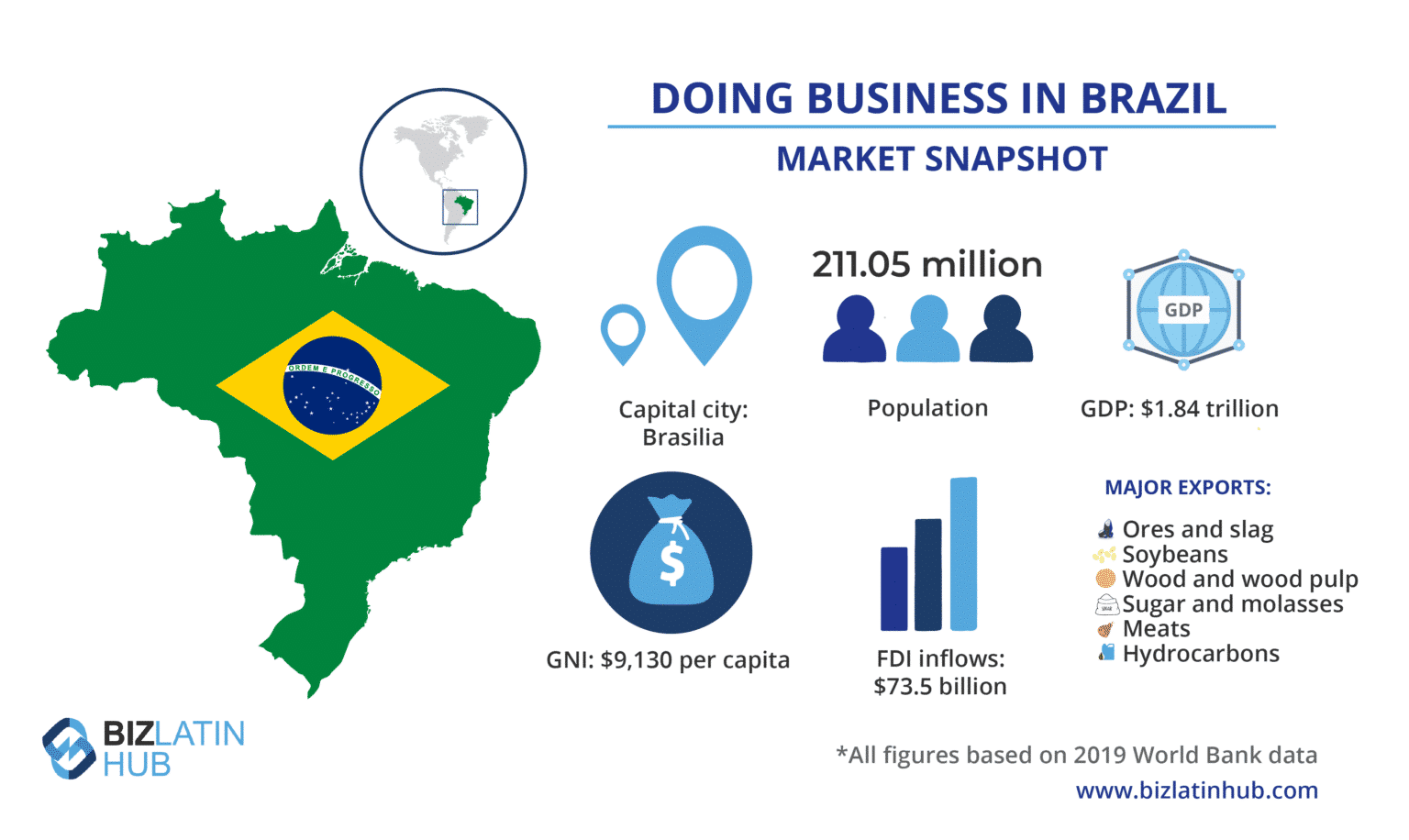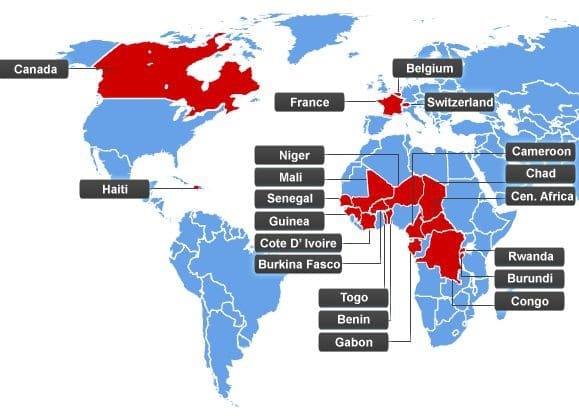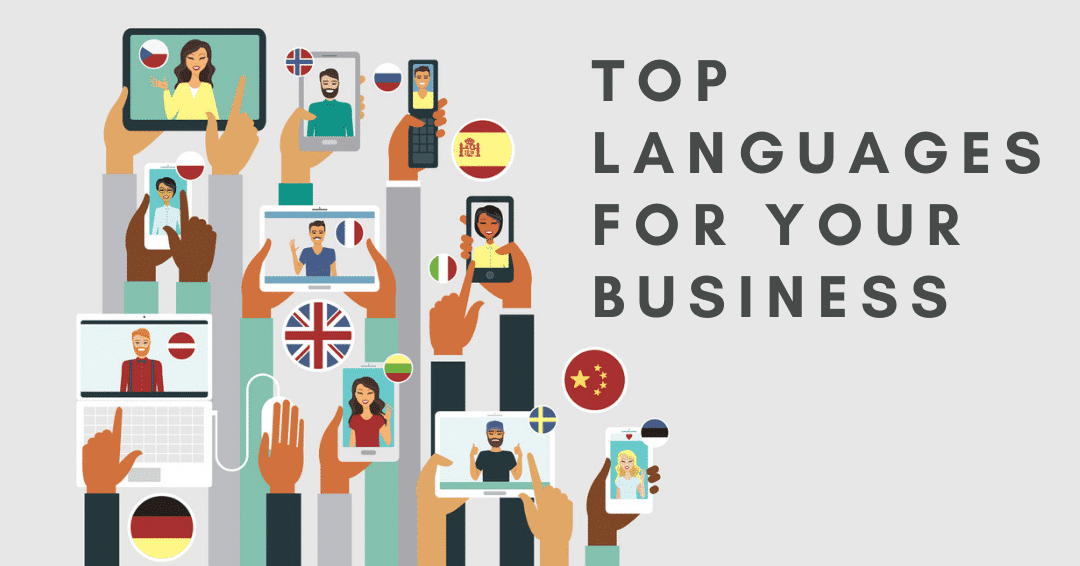In todays global world, there are numerous different languages spoken by different parties involved in a deal. Are you wondering about the best languages for your business so it can succeed internationally? Read our blog to find out.
English has taken over the business sphere and we often overestimate how helpful it can be to expand to new, foreign markets.
Speaking the local language is a massive advantage for anyone who looks for new opportunities abroad for their business. Besides respecting the local people, culture, and traditions, learning the local language can be incredibly beneficial when setting up your business.
Being fluent in the country’s language where you are expanding gives you flexibility and helps you build solid personal connections. It might even increase the effectiveness of negotiations with potential partners and communications with local team members.
There are numerous benefits to knowing the locale language; however, being fluent in a foreign language is not easy. So you should carefully consider which one to pick.
Here are the top 6 languages for business translation – maybe the one for you is among them!
Top Language for your business: Mandarin Chinese
Mandarin Chinese is the language with the most native speakers in the world – over 920 million. Overall, there are 1.1 billion Mandarin Chinese speakers, making it the most widely spoken language after English.

Mandarin is the official language of the People’s Republic of China, Taiwan, and Singapore.
Mandarin Chinese has gained significant prestige in the business sphere due to China’s economic power. According to Bloomberg ranking, Mandarin Chinese is the top business language in the world after English.
As for China, the country has been the biggest contributor to global economic growth since 2008 and is currently the second-largest economic power in the world after the U.SU.S. The statistics speak for themselves:
- G.D.P. – Nominal: $14.9 trillion
- The GDP per Capita: $10,839
- G.D.P. – Purchasing Power Parity: $24.2 trillion
- G.N.I. per Capita: $7,723.17
- Internet penetration: 54.0%
China exports goods mainly to Europe and North America. It is the leading trading partner for most countries, including the U.S. and the E.U.
August 2021 marked the 14th month of growth in outbound shipments – a significant achievement, indeed, especially during a global pandemic!

But why should you opt for Chinese? According to EF EPI, China is in the 38th position globally with an average score of 520.
Generally, English is not so popular in China, although it has been a compulsory school subject since third grade. Mandarin Chinese remains the primary language of business in China.
Because of this, many business owners, such as the Indian entrepreneur and C.E.O. of O.Y.O. Rooms Ritesh Agarwal, and Facebook C.E.O. Mark Zuckerberg, who want to operate in the Chinese market, have learned the language.
Also Read: How To Localize Your Website For China
2. Spanish
There are 534 million Spanish speakers in total, 460 million native, and 74 million non-natives. Spanish is an official language in 21 countries on four continents – Europe, South and North America, and Africa.
Spanish is the fourth most spoken language globally and the second most spoken native language after Mandarin Chinese.
The Spanish is also the third most used language on the Internet with 86% internet penetration – making it an excellent opportunity for e-business.

In recent years, Spain has established itself as an economic power in Europe. Transparent regulatory aids Spain’s economic growth and judicial systems, structural reforms, and reliable financial institutions.
Since 2008 a steady modernization has contributed to significant growth in the industry sector, which is currently 27% of the country’s G.D.P. Imports and exports, on the other hand, amount to over 65% of Spain’s G.D.P.
Also Read: The Prevalence of the Spanish Language Within the US
Besides Spain, Mexico, Colombia, and Argentina are among the largest G.D.P.s in the region of South America:

Due to the increasing migration, the U.S. has become home to the second-largest Spanish population in the world.
Immigration is excellent news since it means that the largest economy in the world is part of the Spanish-speaking market. The buying power of the Spanish-speaking community in the U.S. is estimated at $1.5 trillion and is expected to grow.
While in Spain, English is relatively widely spoken, in South America, most countries have very low proficiency in the language of Shakespeare.
Thus, knowing Spanish is, more or less, imperative! But don’t worry – Spanish is considered the most accessible language to learn since its grammar is relatively straightforward, with only a few exceptions.
Also Read: Spanish Localization: Should You Localize into LA or European Spanish?
3. Arabic
Arabic has become the fastest growing language globally, with nearly 30 million L2 speakers and 245 million native speakers. The Arabic is an official language in 26 countries.

What’s more, the Arabic language is a significant part of the culture of the Muslim world since it is the language of Islam and the holy book – the Quran.
The Middle East is well-known for its oil reserves and is among the largest exporters of natural resources. The wealthiest countries in the Arab world are Qatar, the United Arab Emirates, Kuwait, and Saudi Arabia.
Also Read: What Are The Main Languages Spoken In The Middle East?
Besides natural resources, these countries have become popular tourist destinations. As a result, most of the countries in the Middle East have gained considerable economic power. The Arab league has a G.D.P. of over $7.6 trillion at nominal value.
The member states are incredibly diverse – the G.D.P. per Capita of Qatar, the wealthiest country in the group, is 35 times higher than the G.D.P. of Djibouti. The Free Trade Agreements have and continue to provide conditions for flourishing trade and economies.

Many economically developed countries in the Middle East are active participants in global trade.
However, business in the Arab world relies heavily on face-to-face communication in contrast to the Western manner of doing business.
Thus, speaking Arabic can be an essential tool when expanding your business to the Arab-speaking world.
The Arabic language is very different from the European language – Language written from right to left and does not use the Latin writing system. Still, this language has a very bright future, so it is worth the effort, no doubt.
Also Read: 10 Reasons Why Arabic Is An Incredibly Interesting Language
4. Brazilian Portuguese
Brazilian Portuguese is a variety of the Portuguese language and is spoken by 211 million speakers.
Similar to the Spanish, the Portuguese expanded due to Portugal’s colonialization expeditions.
Portuguese is spoken on four continents – Europe, Africa, Asia, and America, and is the official language of 9 countries.
However, Brazil is the natural pearl in the crown, and this is why we will pay particular attention to Brazilian Portuguese!
Also Read: Portuguese eCommerce Translation for Brazil
Brazil has the 12th largest economy globally, and its worth of natural resources is estimated to be over $20 trillion.
In Brazil’s economy can be rendered as an open and diverse one, resulting in flourishing trade relations with countries all over the world. In 2019 Brazil’s FDI was estimated to be nearly 73 billion.
- GDP – Nominal: $1.8 trillion
- The GDP per Capita: $6,450.
- GDP – Purchasing Power Parity: $3.08 trillion
- GNI per Capita: $9,130
- Internet penetration: 70.0%
Foreign investors are drawn to Brazil not only because of the country’s extensive natural resources but also due to the excellent infrastructure, supportive institutions, and government initiatives in the scientific and technological sector.

However, only 5% of the Brazilian population is literate in English.
Indeed, despite the large numbers of tourists visiting the country, English remains not so widely spoken. Thus, Brazilian Portuguese is a must, especially when doing business in the country.
Also Read: Portuguese vs Spanish – Is Spanish similar to Portuguese?
When learning the language, however, keep in mind that there are specific regional expressions. Make sure to know them because you will make an impression on the locals!
5. French
French is spoken by 280 million speakers and is an official language in 29 Europe, Africa, and North America. While French, often considered the language of culture, has become a significant part of the business world.
France is the 7th largest economy globally and the most visited destination in the world!
- GDP – Nominal: $2.55 trillion
- The GDP per Capita: $39,257
- GDP – Purchasing Power Parity: $2.95 trillion
- GNI per Capita: $44,657.73
- Internet penetration: 82.0%
Besides tourism, foreign trade is an essential part of the French economy. The value of export and imports is estimated to be over 60% of the G.D.P.
Efficient regulations and well-protected property rights aid investors considerably. Indeed, France ranked 32nd globally according to the World Bank’s 2019 Ease of Doing Business index.

While French people have a high proficiency in English according to EF EPI, they value their language and thus, would always appreciate the extra effort of trying to communicate in their native language.
What’s more, French is an official language of the E.U., the U.N., NATO, World Trade Organization, so you might as well find it helpful to learn it!
Also Read: Italian vs French: How Different and Similar are these Languages?
If you speak any other Romance language like Spanish or Italian, you might find French relatively easy. In fact, due to their common origins, French and English have many words in common, which are always helpful!
6. German
German, is not as widely spoken as the languages above. However, it can offer numerous opportunities for business in the German-speaking market.
The language of Goethe is spoken by 135 million people, mainly in Europe. It is an official language in Germany, Austria, Switzerland, and Belgium which happen to be among the leading economies in Europe. Thus, German is a language worth learning!
Also Read: German eCommerce: A Guide to Translation and Localization
Germany is Europe’s largest economy and has the 4th largest G.D.P. in the world. Furthermore, the total value of imports and exports is nearly 90% of its G.D.P.
- GDP – Nominal: $3.78 trillion
- The GDP per Capita: $45,466
- GDP – Purchasing Power Parity: $4.45 trillion
- GNI per Capita: $48,821.71
- Internet penetration: 89.0%
The Germany’s social market economy relies on open-market capitalism and social guarantees.
Germany is a very entrepreneurship-oriented country, offering well-developed infrastructure, a skilled labor force, and numerous government initiatives to facilitate the business.
Also Read: German vs Russian: Which Language Has a Brighter Future?
The main economic drivers are the automotive industry, the service industry, healthcare as well as tourism.

English, is widely spoken in all German-speaking countries; however, Germans always appreciate it when foreigners speak their native tongue.
Leo Apotheker, former C.E.O. at SAP, Hewlett Packard, have learned German. He claims that knowing German helped him immensely when working on the German software multinational SAP.
Also Read: German VS Polish – How Different Are These Two Languages?
In conclusion
Having a business-oriented mind is not enough when you want to expand to a new country. While English is so widely spoken, we often underestimate how important it is to know other languages.
By knowing the local language, one pays due respect to the local people and their culture. It not only aids communication, but also allows you to be more flexible and independent.
Overall, it seems like learning the local language before going into a foreign market might be worth the time and effort!




